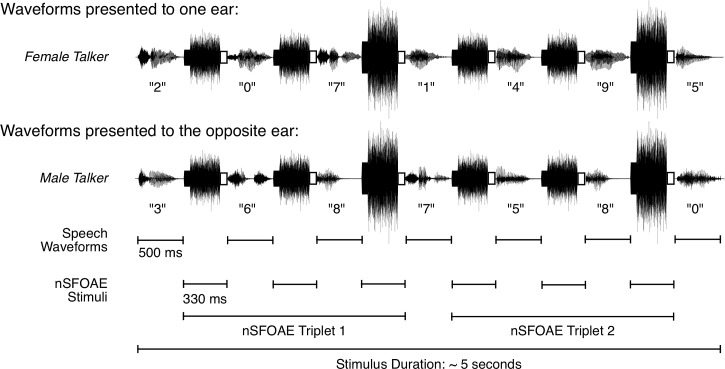FIG. 1.
Schematic showing how the speech sounds and the nSFOAE-eliciting stimuli were interleaved during one trial of the dichotic-listening condition in the auditory study. Each ear was presented with a series of seven spoken digits, one series spoken by a female talker, and the other series spoken simultaneously by a male talker. The ear receiving the female talker was selected randomly on each trial. Each digit was presented in a 500-ms temporal window. A 330-ms ISI separated consecutive digits, during which the nSFOAE-eliciting stimuli were presented. The latter always was composed of a 300-ms tone and a 250-ms frozen sample of wideband noise, and the onset of the tone always preceded the onset of the noise by the difference in their durations. A 30-ms silent period, shown here as an open rectangle, followed each nSFOAE-eliciting stimulus for the purpose of estimating the magnitude of the physiological noise in the nSFOAE recordings. The nSFOAE cancellation procedure was performed separately on each of the two triplets presented on each trial, yielding two estimates of the nSFOAE per trial. Although not shown here, a 2000-ms silent response interval and a 200-ms feedback interval completed each trial. During the response interval, the subject performed a two-alternative matching task based on the digits spoken by the female talker. For each block of trials, the physiological responses from the trials having a correct behavioral response were based on about 20 to 30 trials. [Reprinted with permission from Walsh et al. (2014a).]

